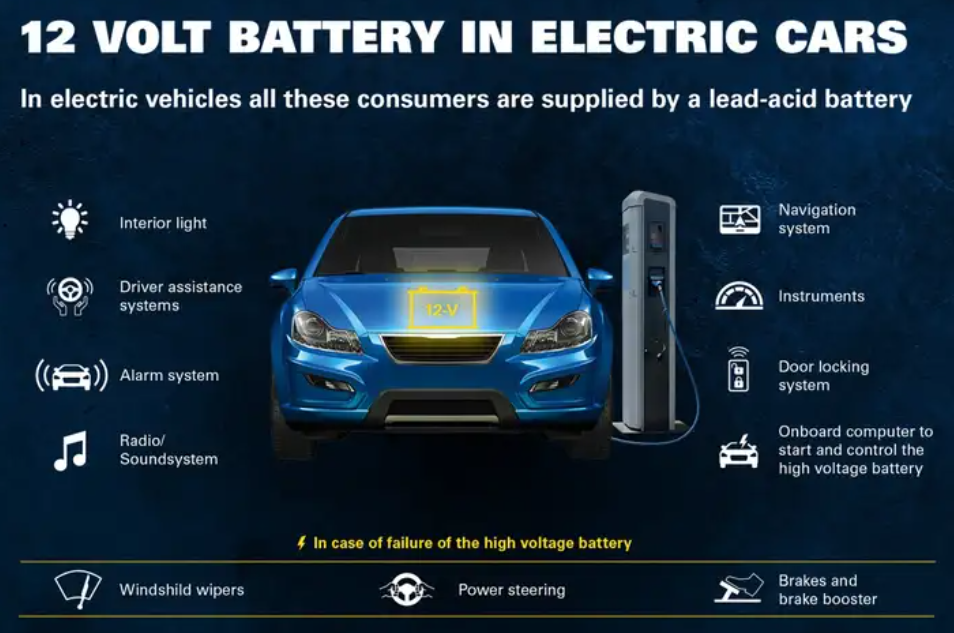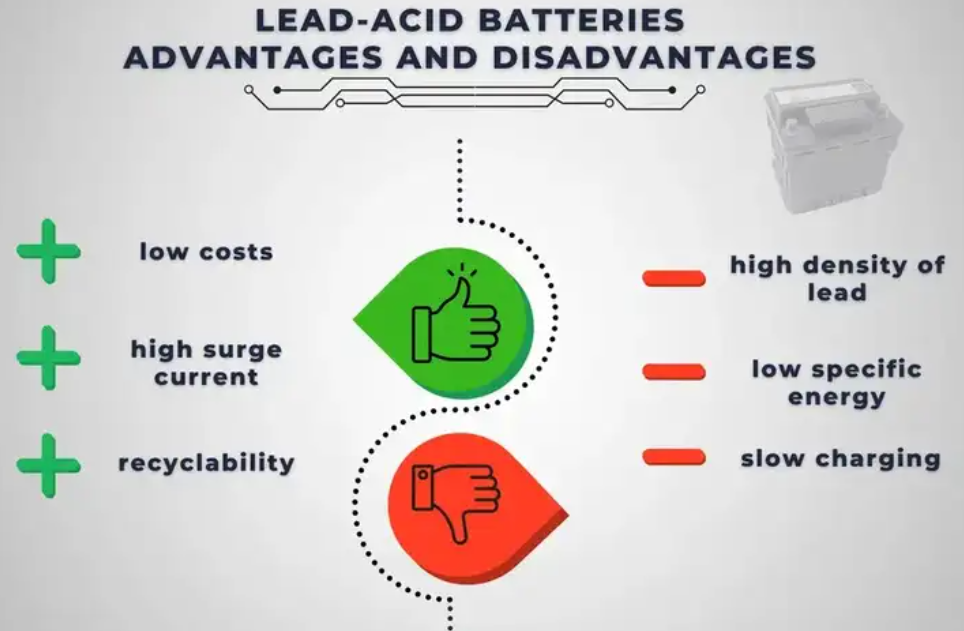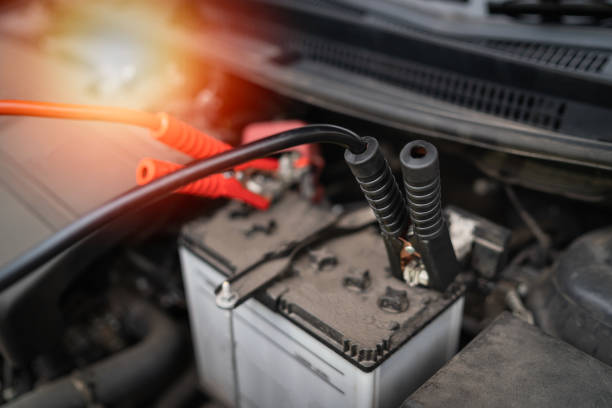Lead-acid batteries were invented by Frenchman G.Plante in 1859. It has a history of 160 years. In 1927, the German company Bosch developed lead-acid batteries for automobiles. The technology has changed little since its introduction in cars.
Today’s battery technology is quite advanced compared to lead-acid batteries. For example, lithium batteries have the advantages of smaller size, larger capacity, and longer life. A lithium battery can already enable pure electric vehicles to travel more than 500 kilometers, so why do cars still use old-fashioned lead-acid batteries as starting batteries?
The role of lead-acid batteries in cars
The 12V battery on the car (car battery 9) plays a vital role in the vehicle system, mainly including the following aspects:

Starting the engine: The 12V battery provides starting current for the car, and the electrical energy is converted into mechanical energy through the engine starter to enable the engine to start normally.
Power supply: The 12V battery provides power to the vehicle to run the vehicle’s electrical equipment, such as lights, audio systems, air conditioning systems, electric windows, central control systems, etc.
Auxiliary generator: While the car is running, the generator generates electricity and stores it in the 12V battery, supplying the vehicle’s electrical equipment and charging the battery to keep it charged.
System Power Supply: The 12V battery also provides power to the vehicle’s various electronic systems, including the engine control unit (ECU), sensors, dashboard display, etc.
Backup power supply: In the event of generator failure or other power failure, the 12V battery can act as a backup power supply to keep the vehicle’s basic electrical systems running, such as lights and horns.
In summary, 12V batteries are beneficial for power supply, control and communication before driving, during driving and in emergencies. Electric cars still require a 12V battery system similar to conventional cars.
Why lead-acid batteries are still used
Given the high-tech nature of electric vehicles, it may seem surprising that simple, age-old lead-acid chemistry still dominates 12V batteries. There are some good reasons why lead-acid technology remains the standard for electric vehicles:
Mature technology and high cost performance
Lead-acid batteries are one of the oldest and most mature rechargeable battery technologies. Over the years, they have been continuously improved and optimized to increase their performance and reliability. The production cost of lead-acid batteries is relatively low, making them more cost-effective in the automotive market. For most consumers, lead-acid batteries are relatively cheap to purchase and replace, which is an attractive factor.
Reliability and adaptability

Lead-acid batteries perform well in a variety of climate conditions. They have high starting power and provide sufficient starting current even at extreme temperatures. This characteristic makes lead-acid batteries ideal for vehicles in cold and hot regions. In addition, lead-acid batteries have strong charge and discharge adaptability and high surge current capabilities.
Safety
Spilled lead acid is less flammable than lithium-ion batteries. This is especially important since the 12V battery is usually located inside the cabin.
Recyclability
Lead-acid batteries are one of the only products in the world that can be almost completely used, recycled and remanufactured into new versions of the same product. In mature markets, the recycling rate for these batteries is close to 100%.
Market fit and infrastructure
Lead-acid batteries are the standard battery type used in the traditional automotive industry, and many automakers and service providers have charging and maintenance equipment specifically designed for lead-acid batteries. In addition, a global production and distribution network for lead-acid batteries has been established. This existing market adaptability and infrastructure makes automakers more likely to choose lead-acid batteries.
Recap
After hundreds of years of development, 12V lead-acid batteries have become very mature in terms of reliability, low cost, richness and performance. Moreover, current low-voltage systems of any energy type still need to rely on lead-acid batteries, especially for fuel vehicles. The operation of the electrified component auxiliary system in the vehicle relies on this lead-acid battery.
Therefore, in the foreseeable future, lead-acid batteries will still play an irreplaceable and important role in vehicle operation, thus maintaining strong user demand for a long time to come. The future of 12V batteries in electric vehicles will also see incremental improvements, but no major revolution will happen anytime soon, with lead-acid formulations continuing to improve energy density, cycle life and cold-start capabilities.

